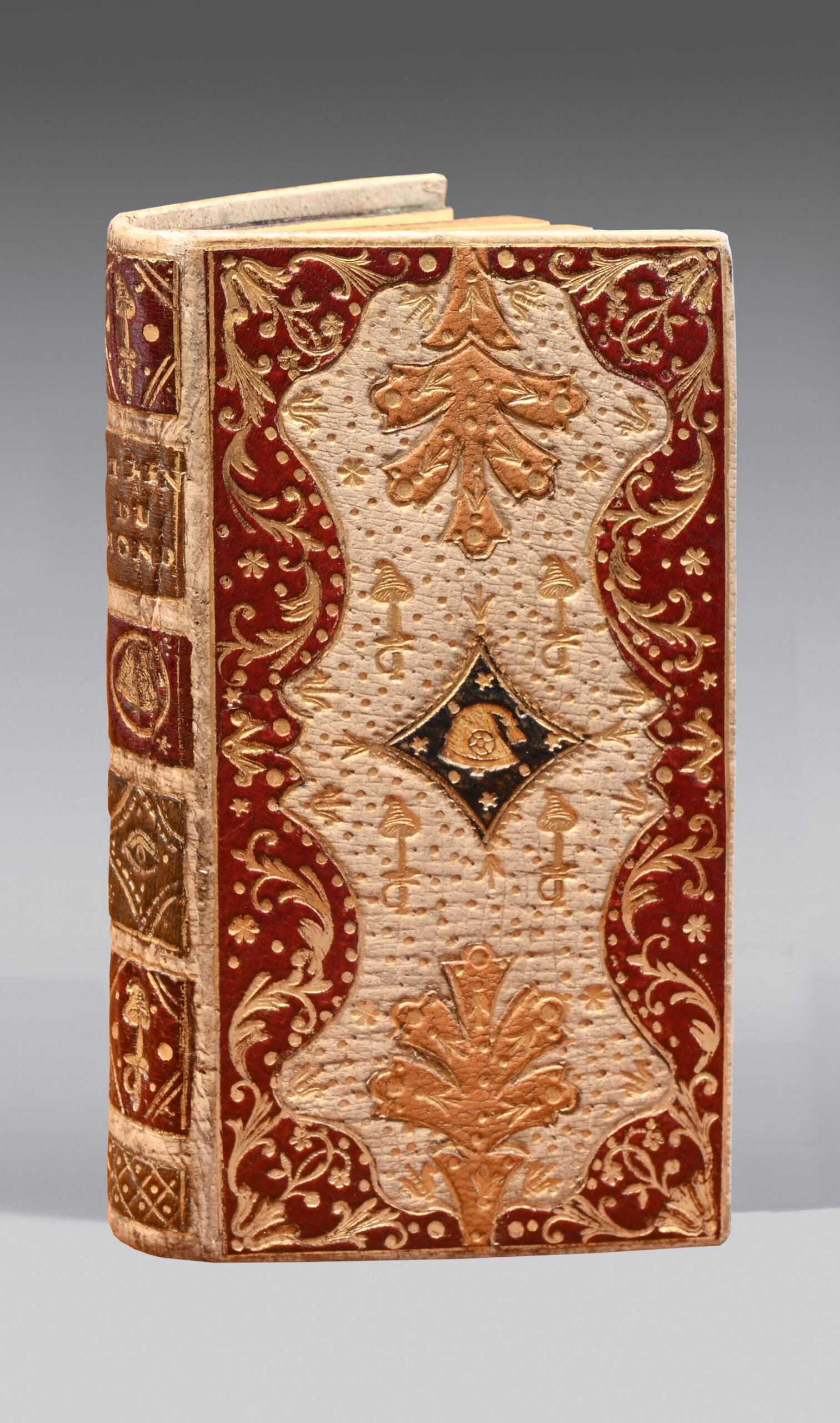À Paris, chez Langlois, Demorain, 1794.
24mo. Collation: 127 pp., 2 folded sheets presenting 7 maps, paper loss at bottom of pp. 23 and 105.
Red morocco, large scalloped reserve in white morocco decorated with Phrygian bonnets on a gilt dotted background, in the center a piece of green morocco decorated in the same way, in the center at the hêd and foot a mosaic fleuron in citron morocco, spine with red or olive green morocco, decorated with a Phrygian cap, the eye of vigilance and pikes surmounted by Phrygian caps, doublures and endpapers in polychrome floral paper on a gilt background, edges gilt. Revolutionary binding in contemporary mosaic morocco.
Size of the binding: 101 x 54 mm.
A folding world map with on the verso a map of Europe and a map of France, at the end, a folding lêf, with on the recto a map of Asia and one of Africa, on the verso, a map of North America, and a map of South America.
An exceptional and interesting revolutionary binding decorated with Phrygian bonnets and the eye of vigilance.
To establish the legitimacy of the new regime, the revolutionaries had to rise to a twofold challenge: firstly, to undermine the people’s confidence in the Old Régime, and secondly, to instill faith in the republican regime. Following in the footsteps of a monarchy imprinted in people’s minds through symbols such as the fleur de lys, the crown, the scepter, the white flag and even the king’s portrait, the young republic very quickly succeeded in forging its own signs of recognition and support: a calendar (even if it was not imposed), values (liberty, equality, fraternity), a flag with three colours, a national anthem as well as an allegory of Liberty confused with that of the Republic and soon of France and known as Marianne…
Symbols, visual entities that were more or less simple but highly educational – they could be êsily recognized by the people – played a key role in this process. Concrete objects had to be found to contrast with the symbols of the monarchy, offering a certain ‘figurability’, such as the Phrygian cap, the eye of vigilance, the cockade referring to the united nation or the pike evoking the people’s wêpon. These revolutionary symbols were displayed for all to see during civic celebrations, worn in processions, pinned or embroidered on clothing, painted on walls and hangings, engraved on everyday objects or bookbindings.
Thus united by the same culture and the same belief, the people were to participate in a cultural project of regeneration.
A number of decrees were issued to impose the use of the new symbols:
– 3 October 1793: “the fleurs de lys will be replaced by the bonnet of liberty”.
One of the most precious revolutionary bindings to appêr on the market for several yêrs, combining mosaic morocco in five colours: white, citron, black, red and brown, a background of gilt dots, revolutionary symbols and a remarkable state of preservation.
See less information



